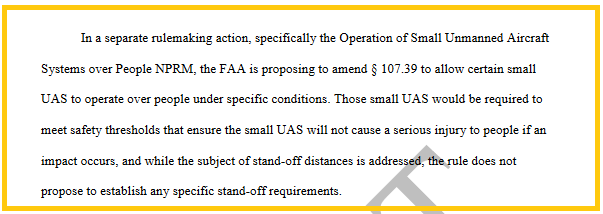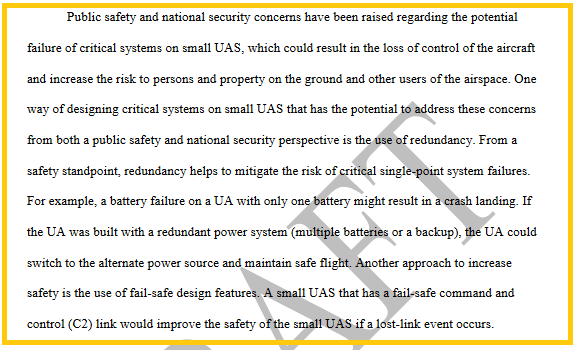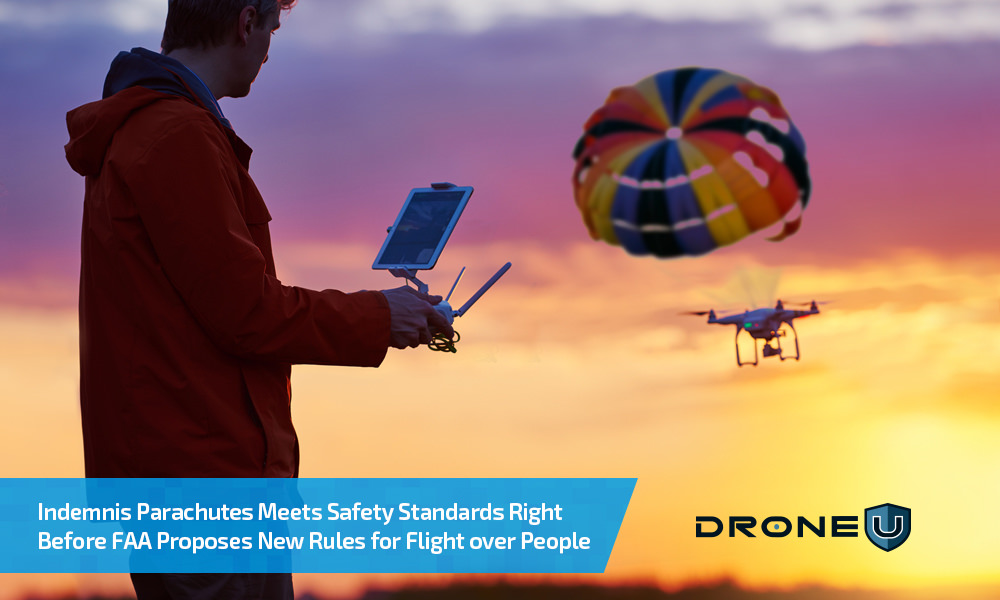The Alaska based Indemnis Parachute recently received approval for their ballistic safety parachutes. With the FAA exploring the possibility of flight over people without a waiver, these parachutes will help drone pilots meet the safety criteria proposed by the FAA.
In this blog post, we first share and discuss some important excerpts from FAA’s NPRM. Next we reveal how Indemnis Parachute came up with their innovative safety solution – the “Nexus”. Does the Nexus guarantee a 100% failsafe solution? Is this a completely autonomous solution? Are there any good alternatives to the Nexus? We cover all this and much more. Read on…
FAA Proposes Night Ops and Flight over People
FAA just released a NPRM which explores the possibility of making night ops and flight over people possible without waivers. Check out this excerpt from the NPRM –

In order to safely fly over people, you need to meet safety thresholds – which negate the possibility of serious injury in case of failure.

One such way of meeting this safety threshold is via Safety parachutes. Let us look at one such solution – Nexus by the Alaska-based Indemnis Parchute.
How Indemnis Parachute Developed a 100% Failsafe Solution
Indemnis means “without harm or injury”. Certainly an apt name considering that they are in the business of making fail proof ballistic parachutes or parachute safety systems that serve a dual purpose. Firstly, such systems prevent a crash landing – thus protecting your expensive drone and camera which can potentially save you thousands of dollars. And secondly (and far more importantly), they protect people from any serious injury.
These Indemnis parachutes were developed after the founders were completely disillusioned with the spring based and drop safe systems. In case of deployment, the parachute would often get entangled with the drone in the ensuing roll and tumble.
Indemnis has developed their safety parachutes in collaboration with other industry majors like DJI and ParaZero after extensive Research and Development. 22 engineers have been painstakingly testing and perfecting this safety system at their impressive 12,000 square foot facility in Alaska.
Indemnis offers a ballistic solution called “Nexus” that shoots the parachute outside in case of an event like a motor failure. The parachute lives in an inflatable tube that is shaped like an inverted sock. Full deployment takes barely 4 milliseconds – which is far, far faster than a typical human reaction. This system come with a manual deployment function too.
The lines and the parachute are fully protected until full deployment is achieved. And the parachute is attached to the end of the tube when inflated. Moreover, on deployment, the tube become highly rigid that does not bend at all.
Remember – a minimum deployable attitude is a prerequisite for the safety system to work properly.
Indemnis Parachute has introduced safety system for the Inspire models right now. Plans to introduce safety systems for the Matrice series are in the pipeline. Safety systems for the Inspire series are expected to cost around $2,500.
Other Alternatives That Help Might Meet FAA’s criteria for Safe Flight over People
Australia-based ParaZero is another company offering drone safety solutions. ParaZero parachutes are a plug and play solution that can be mounted on the top of a drone in just 10 minutes. Like the Nexus, ParaZero is a completely autonomous and ballistic solution that is deployed automatically on failure.
In our past blog, “A Look at the Latest Drone Patents – Futuristic Drone Technologies That Might Become Mainstream Shortly” we talked about a patent filed by Amazon for an Airlift Protection Package (APP) airbag that encompasses the drone to reduce the effect of a crash landing. This solution is particularly apt for drone deliveries as payload restrictions will inhibit delivery providers from using traditional packing material like Styrofoam or inflated packing pillows.
Apart from these solutions, FAA’s NPRM also points out the need for manufacturers to build in greater system redundancy to prevent single-point of failures. So, maybe we might see drones in future equipped with backup power sources to meet FAA’s safety criteria.

Become a Drone U Member.
Follow our Medium Account for commentary on the latest happenings in the drone industry.
Do not forget to subscribe and Listen to Ask Drone U, the #1 drone podcast.






Add Your Comment